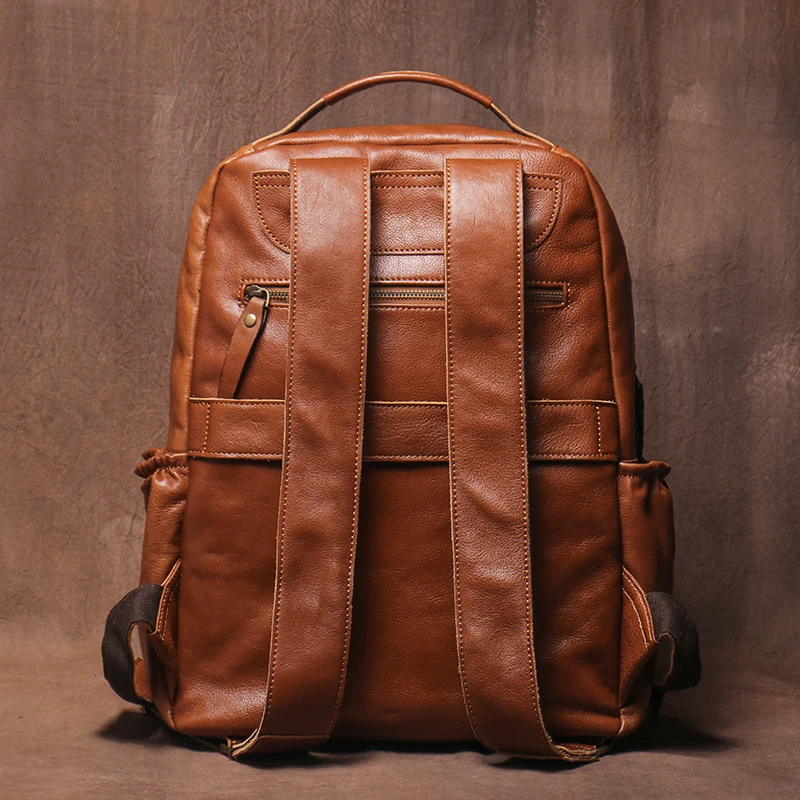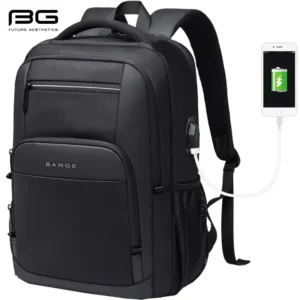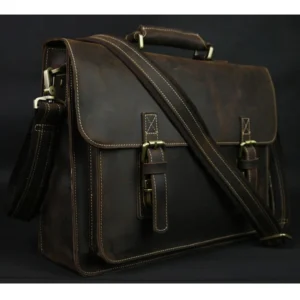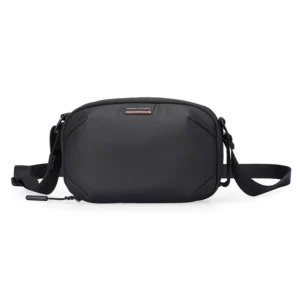1. Understanding Leather Carry-On Essentials: Why Efficient Packing Matters
Leather carry-on backpacks represent the perfect blend of sophistication and practicality for travelers who value both style and function. However, these premium bags require thoughtful packing strategies to maximize their benefits while preserving their quality.
Efficient packing isn’t just about fitting more items—it’s about creating a travel experience that’s stress-free and organized while protecting your investment in a quality leather backpack. When you master proper packing techniques, you’ll enjoy several key advantages:
- Maximized usable space without straining seams or leather
- Prevention of creases, scratches, and pressure marks on your bag
- Maintained shape integrity, even when not completely full
- Quick access to essentials without unpacking everything
- Even weight distribution for comfortable carrying
Nearly 65% of travelers report struggling with efficient packing, particularly when using specialty bags like leather backpacks. Common frustrations include difficulty accessing items mid-journey, overstuffing that damages bags, and poor organization leading to wrinkled clothing or misplaced essentials.
Throughout this guide, you’ll discover specialized techniques that address these challenges while considering the unique properties of leather. Proper leather conditioning and waterproofing is just the beginning of maintaining your bag’s quality—how you pack it plays an equally important role in preservation.
Whether you’re planning a weekend getaway or a business trip, these strategies will help you make the most of your leather carry-on backpack for travel while ensuring both your belongings and the bag itself arrive in perfect condition.
2. The Anatomy of a Premium Leather Backpack: Know Your Space
Before mastering the art of efficient packing, you need to understand the architecture of your leather backpack. Premium leather backpacks typically feature thoughtfully designed compartments, each serving a specific purpose.
The main compartment usually offers the largest capacity and is ideal for clothing and bulkier items. Most quality full-grain leather backpacks include a padded laptop sleeve positioned against the back panel, providing both protection and balanced weight distribution. Front pockets offer convenient access to frequently needed items, while hidden security pockets protect valuables.
Understanding leather’s unique properties is essential for proper packing. Unlike synthetic materials, premium leather offers:
- Natural flexibility that molds to contents over time
- Exceptional durability when not overstretched
- Resistance to minor abrasions and scuffs
- Tendency to develop character with use
However, leather can stretch permanently if consistently overpacked, making it crucial to respect weight-bearing capacities. External pockets work best for flat, lightweight items, while the main compartment supports heavier loads.
When measuring your backpack’s usable space, remember that external dimensions can be misleading. Thick leather and padding reduce internal capacity, so measure interior compartments for accurate planning. A typical 20-liter leather backpack might offer approximately 18 liters of usable packing space after accounting for material thickness and structural elements.
3. Airline Carry-On Regulations: Know Before You Go
Navigating airline carry-on regulations is critical to avoid the frustration of gate-checking your carefully packed leather backpack. While regulations vary by airline, most follow similar guidelines for carry-on luggage.
Standard carry-on size restrictions typically limit bags to 22 × 14 × 9 inches (56 × 36 × 23 centimeters). Weight allowances range from 15-22 pounds (7-10 kg), with budget airlines often imposing stricter limits. The TSA’s 3-1-1 rule for liquids remains consistent: containers must be 3.4 ounces (100ml) or smaller, all fitting in one quart-sized clear bag, with one bag per passenger.
When measuring your leather backpack, remember that soft-sided leather bags have an advantage—they can compress slightly to fit within sizing templates. However, overpacking can eliminate this flexibility. Measure your bag when packed, not empty, for accuracy.
Many travelers don’t realize that a personal item is distinct from a carry-on. Personal items (typically limited to 18 × 14 × 8 inches or 45 × 35 × 20 cm) can accompany your main carry-on, offering additional packing space for items like electronics, reading materials, or snacks.
The airline rules for leather carry-on backpacks can sometimes be more forgiving than for rigid suitcases, but it’s essential to understand the specific dimension guidelines for leather bags to avoid surprises at the airport. When in doubt, check your specific airline’s policies before packing.
4. Pre-Packing Preparation: Minimalist Mindset and Leather Care
Successful packing begins long before items enter your backpack. Developing a minimalist packing philosophy is the foundation of efficient travel with a leather backpack.
Start with a comprehensive packing list tailored to your specific trip. Categorize items as “essential,” “conditional,” and “comfort” to prioritize what truly deserves space.
Prepare your leather backpack by cleaning and conditioning it before travel. The steps for proper leather conditioning include gentle cleaning with appropriate leather cleaner, applying conditioner to maintain suppleness, and allowing sufficient drying time before packing.
Select appropriate clothing by focusing on versatile, wrinkle-resistant fabrics like merino wool, quick-dry synthetics, and wrinkle-resistant cotton blends. Each item should coordinate with multiple outfits.
Minimize toiletries by selecting multi-purpose products and transferring liquids to travel-sized containers. Remember that heavy items like full-sized toiletries can strain leather seams over time.
Consider your backpack’s weight capacity, typically ranging from 15-25 pounds for most premium leather backpacks, depending on size and construction.
A sample minimalist packing list for a weekend trip might include:
* 2 bottoms (1 worn, 1 packed)
* 3 tops (1 worn, 2 packed)
* 3 sets of undergarments
* 1 versatile jacket or sweater
* 1 pair of comfortable shoes (worn)
* Minimal toiletries in travel containers
* Essential electronics and chargers
* Travel documents
By applying this minimalist approach, travelers typically reduce their packed items by 30-40%, creating a more manageable load that protects their leather backpack from unnecessary strain.
5. Core Packing Techniques: Maximizing Space in Leather Backpacks
Mastering specific packing techniques will transform how you utilize space in your leather backpack. These methods not only maximize capacity but also minimize wrinkles and make items more accessible.
The rolling method is perhaps the most space-efficient technique, creating compact clothing cylinders that fit perfectly into leather backpack compartments. To roll effectively:
* Lay garments flat and smooth out wrinkles
* Fold in sleeves and narrow sections
* Roll tightly from the bottom up
* Secure with rubber bands if needed for compression
This technique saves approximately 20% more space compared to traditional folding and works best for t-shirts, casual pants, underwear, and socks.
Packing cubes offer another powerful strategy, creating modular organization within your backpack:
* Use small cubes for accessories and undergarments
* Medium cubes work well for shirts and tops
* Compression cubes can reduce bulky items by up to 30%
* Select slim, lightweight cubes to avoid adding unnecessary bulk
The bundling technique excels for formal or wrinkle-prone clothing:
* Start with a core object (like a small pouch)
* Wrap progressively larger garments around this core
* Place shirts and dresses face-down, wrapping sleeves
* Finish with larger items like pants and skirts
* The tension created naturally resists wrinkling
Military rolling, also called Ranger rolling, creates the most compact clothing bundles:
* Fold the bottom of the garment up about 3-4 inches
* Fold in from both sides
* Roll tightly from the top down
* When you reach the folded section, use it to secure the roll
When packing a backpack evenly, utilize all available space—stuff socks into shoes, use hollow spaces creatively, and compress air out of clothing whenever possible. These techniques combine to increase your backpack’s functional capacity by up to 40%.
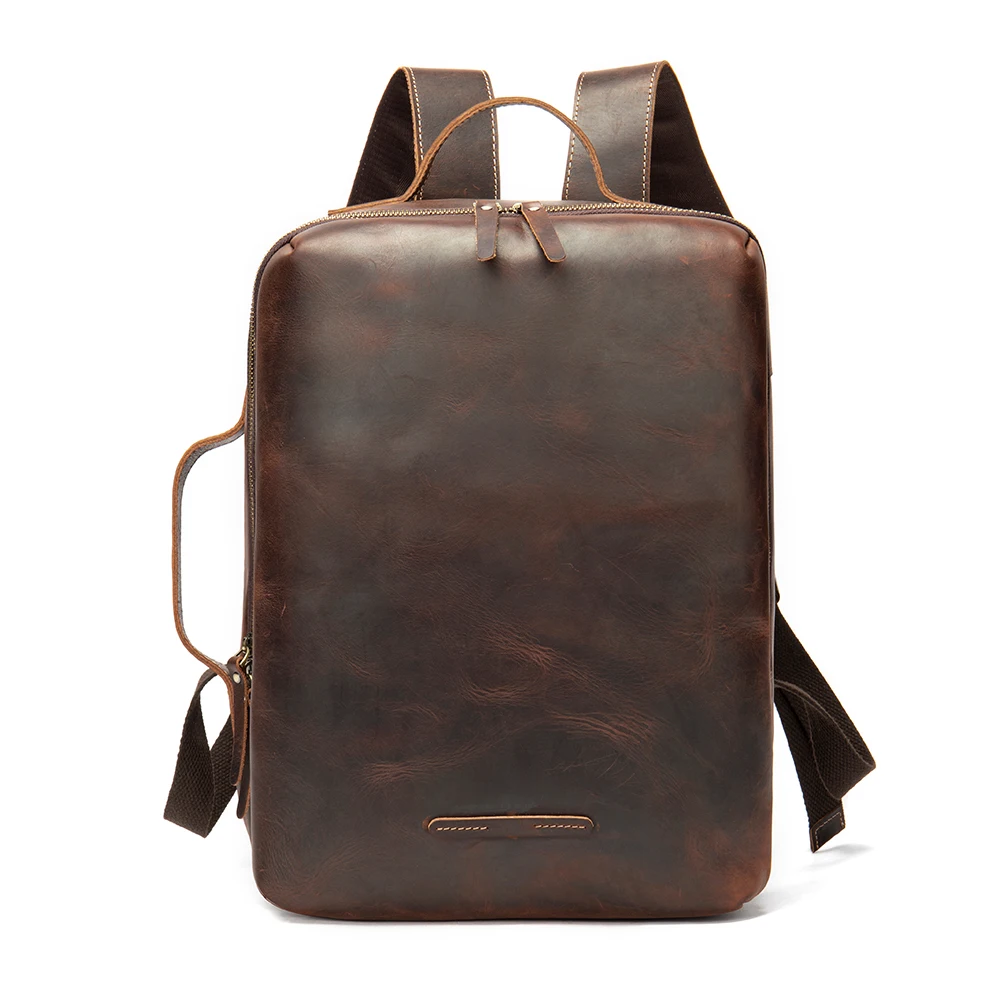
6. Strategic Placement: The 3-Layer Approach for Leather Backpacks
Once you’ve mastered packing techniques, the next step is strategic placement within your leather backpack. The 3-layer approach ensures balanced weight distribution while protecting both your belongings and the backpack itself.
Bottom Layer: Foundation Items
The bottom of your backpack should contain heavy, non-fragile items that create a stable base:
* Shoes (placed in dust bags and positioned sole-to-sole)
* Bulky clothing like jeans or sweatshirts
* Toiletry kits (provided they don’t contain fragile items)
* Books or other dense objects
This foundation layer typically accounts for 25-30% of your backpack’s height and provides stability while keeping heavy items close to your back for proper weight distribution.
Middle Layer: Core Clothing
The middle section is ideal for the bulk of your clothing:
* Rolled t-shirts and casual clothing
* Packing cubes with everyday essentials
* Medium-weight items that aren’t frequently accessed
* Soft items that can conform around others
This layer comprises about 40-50% of your backpack’s capacity and serves as the flexible core of your packing system.
Top Layer: Quick-Access Items
Reserve the top section for items you’ll need to access during transit:
* Light sweater or jacket
* Snacks or water bottle
* Travel documents (unless in a dedicated pocket)
* Electronics you may need before reaching your destination
The back panel area against your spine should contain flat, rigid items like laptops and documents. This placement not only protects these valuables but also creates a comfortable carrying experience.
Front and side pockets are perfect for frequently accessed items but avoid overstuffing these areas as they can create pressure points against the leather. Travel backpacks designed with optimal compartment layout make this strategic placement even more effective, with dedicated spaces for specific items.
This layered approach maintains the backpack’s center of gravity close to your body while preventing uneven stress on the leather material.
7. Protecting Your Leather: Anti-Stress Packing Methods
Quality leather backpacks represent a significant investment, making protective packing techniques essential for long-term durability. Preventing damage during travel requires special consideration beyond basic organization.
Overpacking is the greatest threat to leather backpacks. When leather stretches beyond its natural capacity, it can develop permanent deformations, weakened seams, and stress marks. To prevent this:
- Stop packing when you feel resistance while closing zippers
- Allow approximately 10% unused capacity for leather’s natural flexibility
- Use compression techniques on contents rather than forcing the leather to stretch
Sharp objects pose another risk to leather interiors. Protect your backpack by:
* Using protective sleeves for electronics with corners
* Placing items with zippers or buttons against soft clothing layers
* Wrapping potentially abrasive items in soft pouches
* Keeping keys and other pointed objects in dedicated pockets
Hardware stress points require special attention:
* Avoid hanging heavy items from external straps or D-rings
* Distribute weight evenly across multiple compartments
* Keep zippers clear of fabrics that might catch
* Use zipper lubricant to prevent forcing and potential tears
When your backpack isn’t fully packed, consider using a structured insert or even bubble wrap to maintain its shape. This prevents creasing or folding that can create permanent marks in the leather.
For comprehensive protection, including against unexpected weather, consider applying protective treatments for leather during travel before your trip. These create an invisible barrier against moisture and stains without affecting the leather’s appearance or breathability.
8. Electronics and Valuables: Secure Packing for Travel
Electronics represent some of the most valuable—and vulnerable—items in your travel inventory. Packing them properly in your leather backpack ensures both protection and accessibility.
Laptops and tablets belong in dedicated sleeves against the back panel of your backpack. This placement offers multiple benefits:
* Maximum protection from impact
* Balanced weight distribution against your back
* Streamlined profile that maintains the backpack’s shape
* Quick removal at security checkpoints
Cable management prevents tangles while protecting your backpack’s interior from cable-induced wear:
* Use small pouches or organizers for cables and adapters
* Wrap cables properly using the figure-eight technique
* Keep cables away from items with zippers to prevent snags
* Consider retractable options for frequently used cables
For valuable items requiring heightened security:
* Place small valuables in internal zippered pockets
* Position RFID-blocking wallets in hard-to-access inner compartments
* Avoid exterior pockets for anything valuable
* Consider a travel lock for additional security
Many backpacks with secure compartments for electronics include hidden pockets and RFID-blocking technology. When selecting electronic accessories for travel, prioritize multi-functional items like combination chargers to reduce bulk and weight.
Airport security requires easy access to electronics, so organize your backpack to allow for quick removal and replacement of these items. Place your laptop in a TSA-approved sleeve that can be removed independently, without disturbing your other packed items.
14 Inch Leather Laptop Backpack, Brown Leather Backpack, Men's Leather Backpack, Vintage Leather Backpack
Price range: $177.28 through $199.12 Select options This product has multiple variants. The options may be chosen on the product pageCarry On Leather Backpack, Roll Top Leather Backpack
Price range: $77.76 through $96.48 Select options This product has multiple variants. The options may be chosen on the product pageDesigner Men's Backpack, Men's Leather Laptop Backpack, Men's Leather Work Backpack
Price range: $158.04 through $160.04 Select options This product has multiple variants. The options may be chosen on the product pageBrown Leather Sling Backpack, Crossbody Leather Sling Backpack, Men's Leather Sling Backpack
Price range: $191.96 through $193.72 Select options This product has multiple variants. The options may be chosen on the product page15 Inch Leather Laptop Backpack, Leather Briefcase Backpack
$332.96 Select options This product has multiple variants. The options may be chosen on the product pageBlack Leather Sling Backpack, Crossbody Leather Sling Backpack, Small Leather Sling Backpack
Price range: $103.88 through $104.08 Select options This product has multiple variants. The options may be chosen on the product page
9. Liquids and Toiletries: Preventing Leather Damage
Liquid leaks present one of the greatest risks to leather backpacks, potentially causing permanent staining and material damage. Proper containment of toiletries and liquids is essential for protecting your investment.
Select containers specifically designed for travel with these features:
* Double-walled construction to prevent leaks
* Screw-top rather than flip-top closures
* Silicone or other leak-proof materials
* Appropriate size for TSA compliance (3.4oz/100ml or less)
Implement a double-bagging strategy for maximum protection:
1. Place all liquid containers in individual zip-top bags
2. Position bottles upright with caps facing up
3. Squeeze air out of individual bags before sealing
4. Place these individual bags within a larger toiletry bag or pouch
5. Position this container away from leather surfaces, ideally in a waterproof compartment
For air travel, prepare a TSA-compliant clear bag with essential liquids that can be quickly removed during security screening. Keep this separate from your main toiletry kit for convenience.
Consider solid alternatives to reduce liquid risks:
* Solid shampoo and conditioner bars
* Powder or solid deodorant
* Toothpaste tablets instead of paste
* Solid perfume instead of liquid fragrances
Should a spill occur despite these precautions, knowing cleaning techniques for accidental spills can prevent permanent damage. Quick action with appropriate leather cleaners can often resolve minor incidents before they cause lasting harm.
The strategic placement of toiletries matters as well—keep them away from electronics and position them where any potential leak would cause minimal damage, ideally in a separate waterproof pouch within your packing system.
10. Advanced Space-Saving Techniques: Beyond the Basics
Once you’ve mastered fundamental packing strategies, these advanced techniques can further maximize your leather backpack’s capacity for longer journeys or more complex packing needs.
Vacuum compression bags can be valuable tools when used correctly with leather backpacks:
* Best for soft clothing like sweaters and jackets
* Use hand-roll varieties rather than vacuum-required types
* Avoid over-compression that creates hard, bulky shapes
* Place compressed items in the center of your pack, not against leather walls
Strategic clothing layering eliminates redundant items:
* Select base layers that can function independently or under other clothing
* Choose outer layers that work in multiple combinations
* Pack clothing “outfits” rather than individual pieces
* Limit yourself to a consistent color palette for maximum interchangeability
Convertible clothing options offer remarkable versatility:
* Pants that convert to shorts
* Jackets with removable sleeves
* Reversible garments that provide two looks
* Wraps or scarves that serve multiple functions
Digital alternatives significantly reduce physical bulk:
* Replace physical books with e-readers
* Use digital copies of travel documents (with physical backups)
* Download maps, guides and translation tools to your phone
* Consolidate electronics with multi-function devices
The “wearing strategy” leverages your body as additional packing space:
* Wear your bulkiest shoes and clothing during transit
* Use a travel jacket with multiple pockets
* Layer clothing during travel instead of packing it
* Wear your heaviest items rather than packing them
These advanced techniques can help you pack for extended trips in spacious travel backpacks for extended trips without sacrificing essentials or overloading your leather backpack.
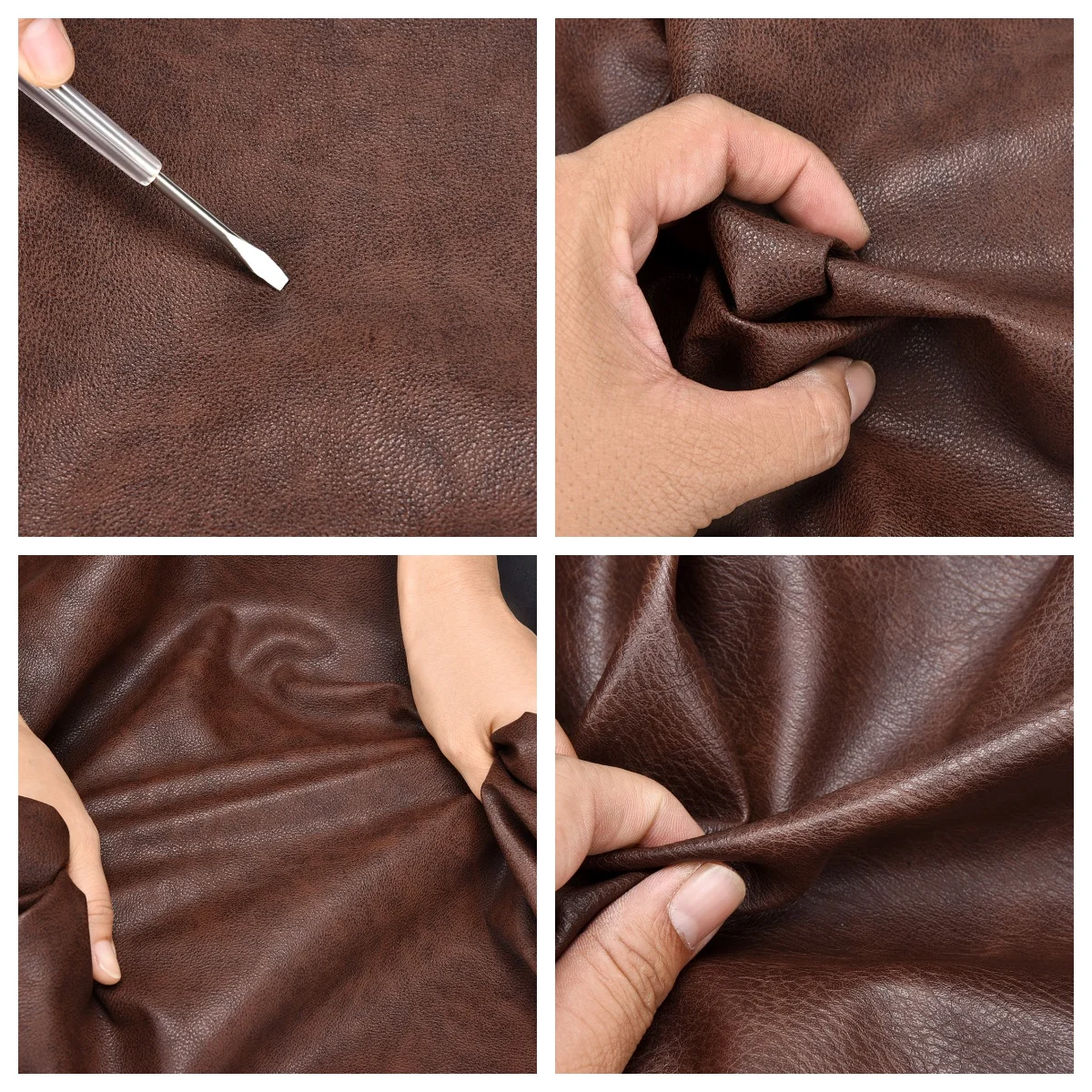
11. Efficiently Navigating Security with a Leather Backpack
Airport security checkpoints can quickly disrupt even the most carefully packed backpack. Strategic organization with security in mind saves time while protecting your leather bag from rough handling.
Before reaching security, prepare your backpack:
1. Empty external pockets of metal objects like coins or keys
2. Place your TSA-compliant liquids bag in an easily accessible location
3. Position your laptop or tablet for quick removal
4. Ensure all zippers are fully closed to prevent items from spilling
During the security process:
1. Remove only what’s necessary—typically just your laptop and liquids
2. Place your leather backpack on the conveyor belt with the laptop compartment facing up for easy inspection
3. Position your backpack to enter the scanner straight, preventing jams
4. Keep small accessories like belts inside your backpack rather than in separate bins
After clearing security, find a dedicated repacking area away from the flow of traffic to:
1. Return your laptop to its protective sleeve
2. Reorganize any disturbed items
3. Verify nothing was left behind or misplaced
4. Re-secure all compartments properly
Backpacks designed for easy laptop access at security feature specially designed compartments that unzip completely, allowing the laptop section to lay flat through scanners while keeping other contents secure.
International security varies significantly between countries. Research your destination’s specific requirements before traveling, as some locations may have additional screening procedures or restrictions that affect how you should organize your backpack.
12. On-the-Go Access: Packing for Convenience During Travel
Even the most efficiently packed backpack fails if you can’t access what you need when you need it. Creating strategic access zones ensures convenience throughout your journey.
Organize your backpack into accessibility tiers:
* Immediate access (external pockets): boarding passes, phone, hand sanitizer
* Quick access (top of main compartment): comfort items, snacks, light jacket
* Middle access (center of backpack): daily clothing, toiletries
* Deep storage (bottom): rarely needed items, clothing for later in the trip
In-flight essentials should be placed for retrieval without standing:
* Entertainment (books, tablets, headphones)
* Comfort items (eye mask, travel pillow, medication)
* Hydration and snacks
* Personal care items (hand sanitizer, facial mist)
Quick-grab items for unexpected situations include:
* Weather protection (compact rain jacket or umbrella)
* Basic first aid supplies
* Power bank for emergency charging
* Versatile layer for temperature changes
When accessing deeply packed items, use these techniques to maintain organization:
* Remove items vertically rather than digging
* Temporarily transfer items to a hotel bed or other clean surface
* Replace items in their original position immediately after use
* Use the “core plug” method—keep smaller items in a central bundle that can be removed and replaced intact
Techniques for organized access become especially important in transit situations where space is limited and time is constrained. Practicing your access strategy before traveling can prevent frustration in high-pressure moments.
13. Is It Worth Packing? Decision Framework for Leather Backpack Travel
Every item in your leather backpack should earn its place. This decision framework helps evaluate whether something truly deserves to occupy valuable space.
Start with the multi-use test: Can this item serve multiple purposes? Items that function in different scenarios (like a scarf that works as a blanket, fashion accessory, and pillow) deliver more value per ounce.
Apply the weight-to-value ratio assessment:
* High value, low weight: Definitely pack (medications, phone charger)
* High value, high weight: Consider carefully (professional camera)
* Low value, low weight: Pack if space allows (extra socks)
* Low value, high weight: Leave behind (heavy books, full-size toiletries)
Use the availability test: Can this item be easily purchased at your destination if needed? Items readily available worldwide (basic toiletries, common medications) can often be left behind.
Implement the frequency test: How often will you actually use this item? The threshold varies by traveler, but a common guideline is:
* Daily use: Pack without question
* Every few days: Probably worth bringing
* Once per trip: Consider whether it’s truly necessary
* “Just in case”: Likely best left at home
Business travelers face additional considerations, balancing professional needs with space constraints. Versatile business attire that transitions from meetings to casual settings maximizes packable outfits while minimizing space.
Maintaining leather quality while traveling often requires small maintenance items like leather wipes or a compact conditioner. These specialized items typically pass the decision framework due to their small size and crucial protection they provide for your investment.
14. Can You Really Pack for a Week in a Leather Backpack?
The answer is a definitive yes—with proper techniques and thoughtful selection, a standard leather backpack can accommodate a full week of travel essentials. The key lies in creating a functional capsule wardrobe and maximizing versatility.
A realistic 7-day packing list fitting in a standard leather carry-on includes:
* 3 bottoms (pants/skirts)
* 5 tops (mix of casual and dressy options)
* 7 sets of undergarments
* 1-2 layering pieces (cardigan, light jacket)
* 1 pair of alternate shoes (plus those worn during travel)
* Minimal toiletries in travel containers
* Essential electronics with multi-purpose chargers
* Basic accessories that complement multiple outfits
The capsule wardrobe approach ensures every item coordinates with multiple others, creating different looks from limited pieces. This typically follows a consistent color palette with 2-3 base colors and 1-2 accent colors.
Laundry strategies extend your clothing capacity:
* Sink-washable fabrics allow refreshing key items
* Packable laundry soap sheets enable easy washing
* Quick-dry fabrics minimize downtime after washing
* Strategic rewearing of lightly worn items conserves clean options
For multi-environment trips, focus on layering rather than packing separate outfits for each climate. A base layer that works alone in warm weather can be supplemented with mid and outer layers for colder conditions.
Digital nomads and business travelers can maximize space through:
* Cloud storage instead of extra devices or drives
* Minimal, versatile work wardrobe
* Multi-purpose devices (tablet with keyboard vs. separate laptop)
* Strategic selection of absolutely necessary technology
For souvenir collectors, consider leaving a small empty section in your compact options for minimalist travel backpack or be prepared to ship items home rather than carrying them.
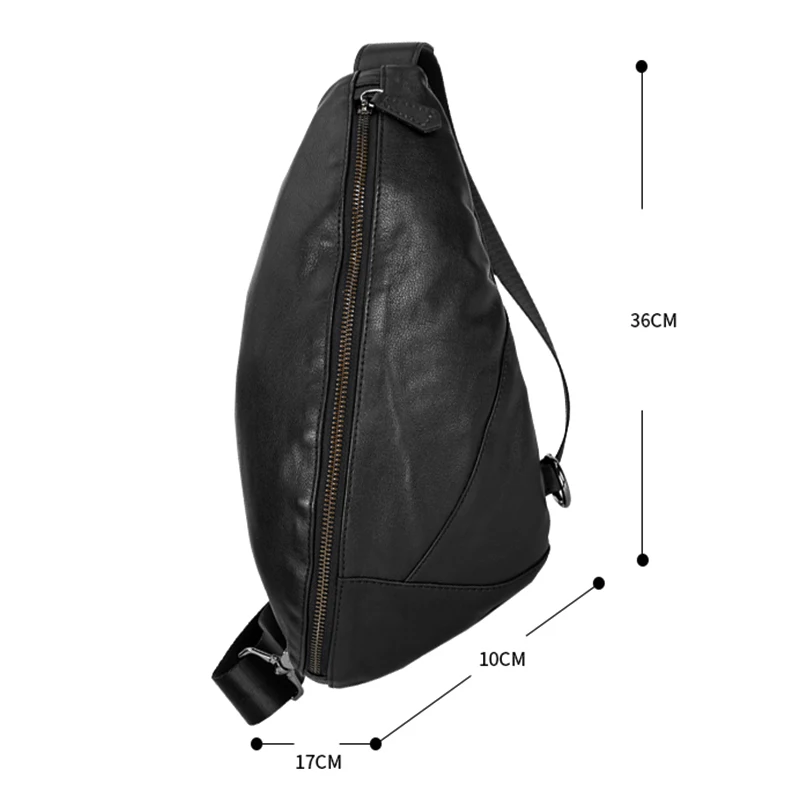
15. FAQ: Solving Common Leather Backpack Packing Problems
How do I pack awkwardly shaped items without damaging my leather backpack?
Place awkwardly shaped items in the center of your backpack, surrounded by soft clothing that can conform around them. Use socks or small clothing items to fill empty spaces and prevent shifting. For extremely irregular items, consider dedicated protective cases that create more manageable shapes.
My leather backpack gets uncomfortable after packing. How can I fix this?
Discomfort usually stems from improper weight distribution. Ensure heavy items are positioned close to your back and centered between your shoulder blades. Adjust your straps properly—most people wear backpack straps too loose. Finally, reconsider whether you’ve exceeded your bag’s comfortable weight capacity, which typically should not exceed 15-20% of your body weight.
How can I prevent wrinkled clothing despite careful packing?
Choose wrinkle-resistant fabrics like wool blends, polyester, nylon, or specially treated cotton. Use the bundle wrapping method for formal clothing. Pack clothing completely dry, as damp items wrinkle more easily. Finally, hang items promptly upon arrival.
What’s the best way to protect my leather backpack from unexpected weather?
Apply appropriate ongoing maintenance during travel with leather protectant spray before your trip. Carry a compact rain cover that can be quickly deployed. In sudden downpours, hold your backpack under your jacket or find shelter immediately. If your backpack does get wet, allow it to dry naturally at room temperature—never use direct heat.
How can I maximize professional clothing options while maintaining minimal packing?
Focus on a core color palette (typically navy, black, or gray) with coordinating accent pieces. Choose wrinkle-resistant fabrics with stretch. Pack clothing that transitions from professional to casual with simple accessory changes. Consider compression techniques specifically designed for formal wear.
What’s the best strategy for adapting to changing weather conditions with limited space?
Layer rather than pack bulky single-purpose items. A thin base layer, insulating mid-layer, and weather-resistant outer layer can handle a wide temperature range when worn in different combinations. Accessories like scarves, lightweight gloves, and packable hats add warmth without consuming much space.
By addressing these common challenges with targeted solutions, you’ll enhance your travel experience while maintaining the beauty and functionality of your leather backpack for years to come.
